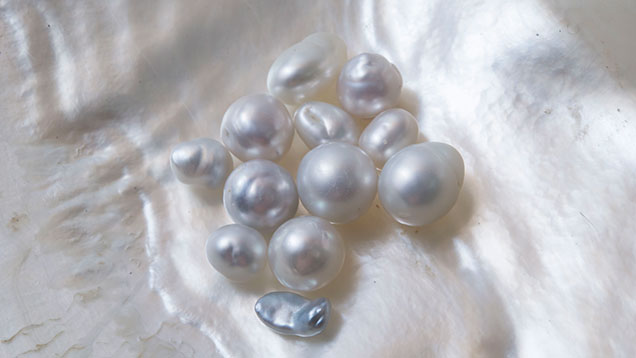Atypical “Beading” in the Production of Cultured Pearls from Australian Pinctada maxima
February 13, 2017

In 2011, the authors began to see cases of low-quality natural pearls being used as unconventional “beads” for cultured nacre growth. These natural pearls had been inserted into the gonads of Pinctada maxima along with a piece of donor mantle tissue, or in some cases into the cultured pearl sacs created by initial or subsequent operations, to facilitate the growth of cultured nacre on to their surfaces.
To better understand this deceptive “beading” process, the authors conducted a total of 91 experiments on Australian Pinctada maxima. In 75 of the experiments, atypical “beads” (including natural abalone, scallop, Pteria sterna, Pinna, drilled coral, and faceted sapphire) were inserted. The other 16 tests consisted of irritating, folding, or inserting tissue into the mantle.
The results of their investigations appear in a study titled “Experiments in Using Atypical ‘Beads’ and Mantle Interference in the Production of Cultured Pearls with Australian Pinctada maxima.”
The study presents real-time X-ray (RTX) and X-ray computed tomography (µ-CT) images of the resulting cultured pearl products. Of the 91 experimental operations, 23 proved successful in cultured nacre growth over the unconventional “beads” and forming “bead” cultured pearls. In most cases, the process could be readily identified with either RTX or µ-CT analysis.



